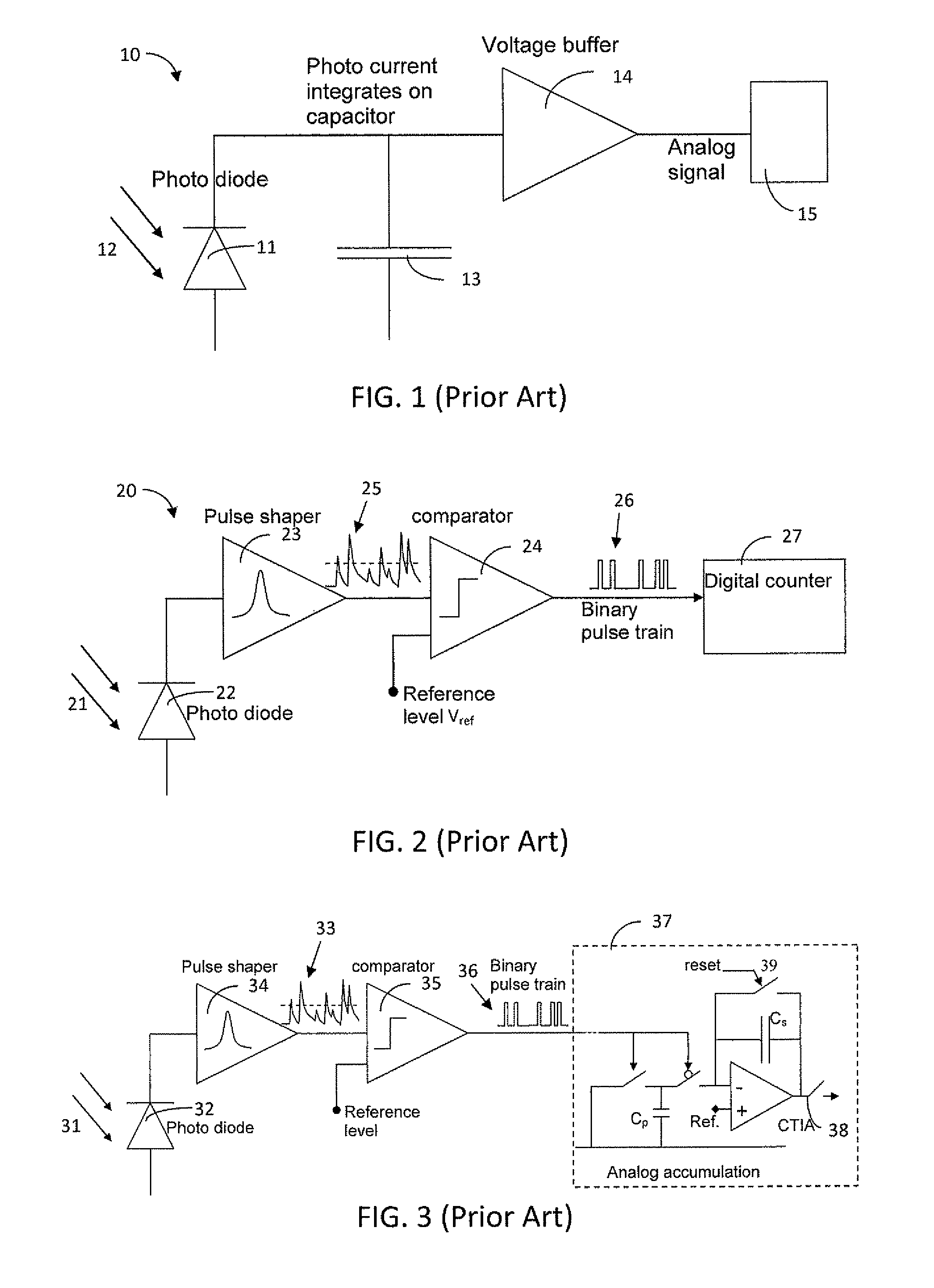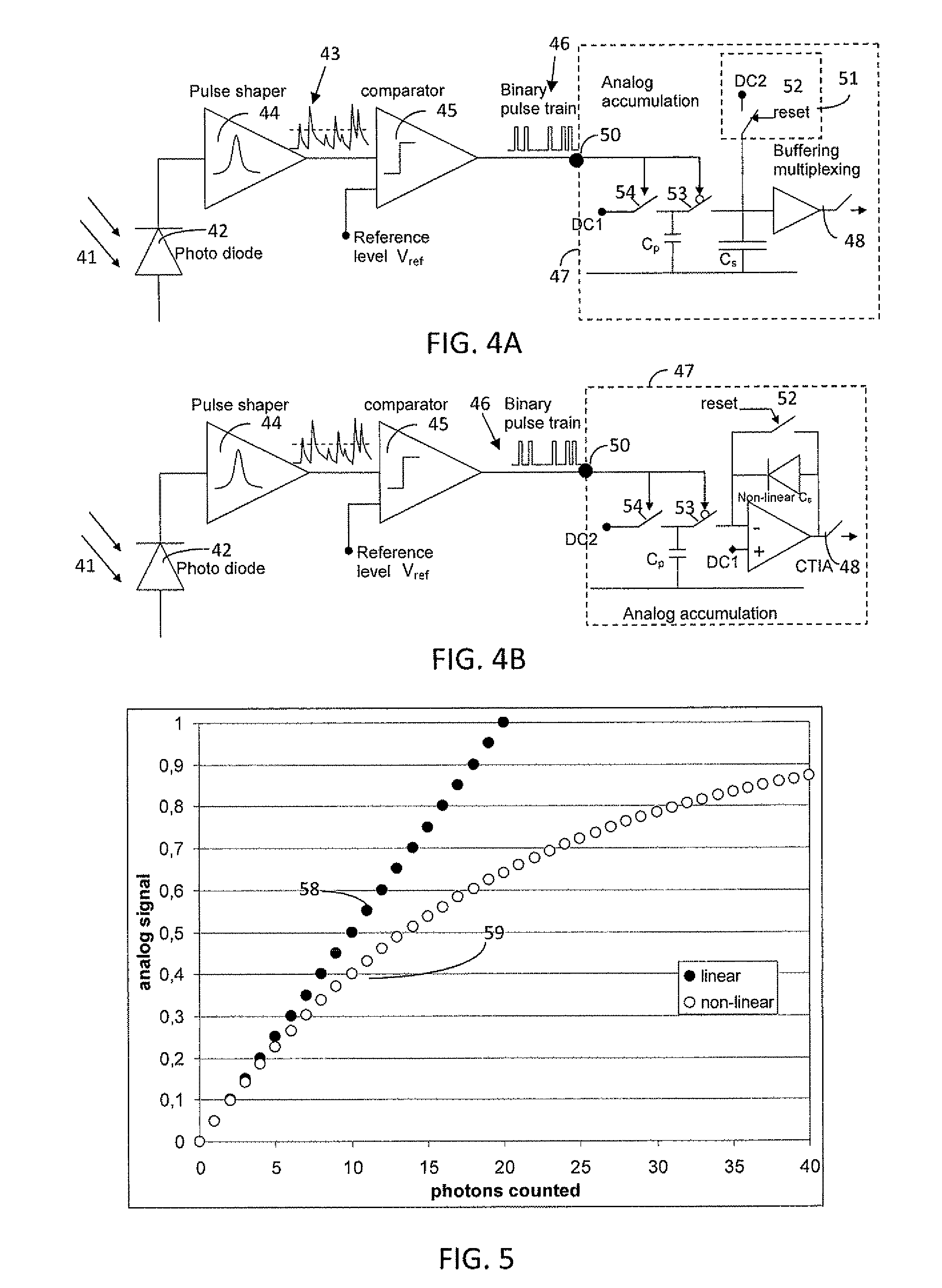High dynamic range analog X-ray photon counting
a high-dynamic range, analog technology, applied in the direction of x/gamma/cosmic radiation measurement, photometry using electric radiation detectors, instruments, etc., can solve the problem of severe risk of overflow, and achieve good dynamic range properties
- Summary
- Abstract
- Description
- Claims
- Application Information
AI Technical Summary
Benefits of technology
Problems solved by technology
Method used
Image
Examples
Embodiment Construction
[0061]The input signal to an image sensor pixel is the radiation intensity at the location of that pixel. The radiation may be any of optical light, IR light, UV light, high energy particles, X-rays, etc. In the following, embodiments of the present invention will be described with reference to X-rays. Embodiments of the present invention are particularly useful when the radiation intensity is low, more particularly so low that the impinging radiation arrives as single photons or pulses of photons rather than as a continuous stream of photons.
[0062]As illustrated in FIG. 4A and FIG. 4B, the intensity of the impinging X-rays 41 is transduced by a radiation receptor, e.g. a phototransducer (the sensor) and its associated circuits to an analog voltage at the output of the pixel. The sensing may be done via a sensor circuit, comprising a phototransducer such as, for example, a reverse-biased photodiode 42. The photodiode 42 collects photogenerated charge carriers, e.g. electrons, the ch...
PUM
 Login to View More
Login to View More Abstract
Description
Claims
Application Information
 Login to View More
Login to View More - R&D
- Intellectual Property
- Life Sciences
- Materials
- Tech Scout
- Unparalleled Data Quality
- Higher Quality Content
- 60% Fewer Hallucinations
Browse by: Latest US Patents, China's latest patents, Technical Efficacy Thesaurus, Application Domain, Technology Topic, Popular Technical Reports.
© 2025 PatSnap. All rights reserved.Legal|Privacy policy|Modern Slavery Act Transparency Statement|Sitemap|About US| Contact US: help@patsnap.com



